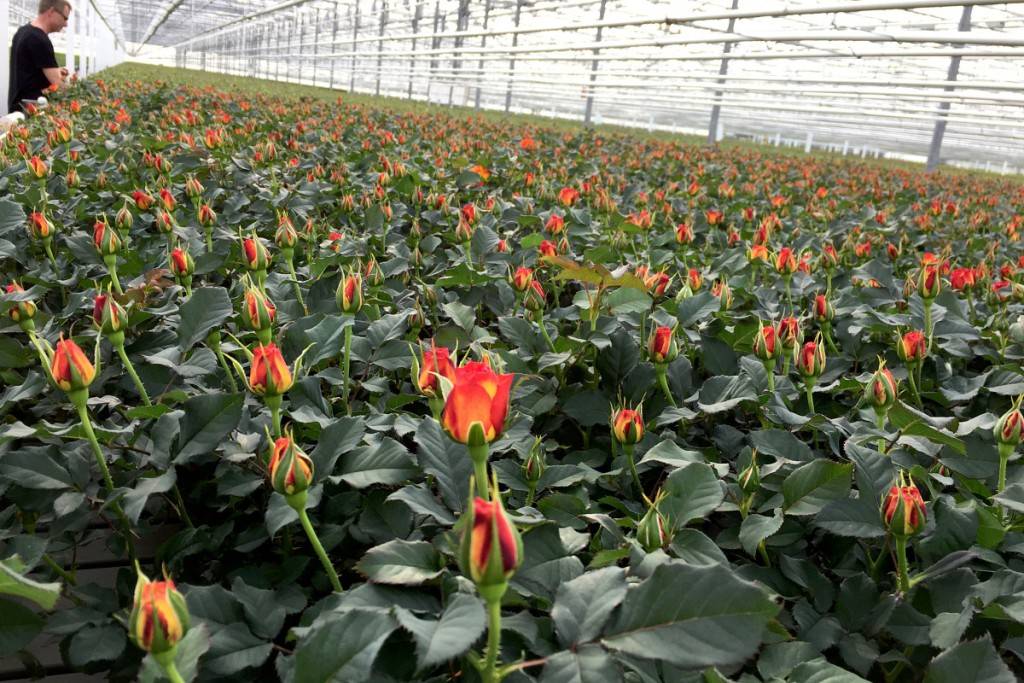
Development and robust production of plants under controlled conditions in shut or partially shut space is known as a polyhouse. The Polyhouse idea arose to embrace unfriendly natural conditions, for example, an abundance of rain fall, high temperature, outrageous cold condition, wind current and so forth.
Types of polyhouses that can be used for rose cultivation include:
- Sawtooth
- Barrel-shaped
- Ridges and furrow
Process for rose cultivation
- Site Selection:
The selected site should be pollution free and should have basic amenities required for plantation such as water availability, electricity connection and availability of labour. Apart from that, the site should be near to a connecting road that is easily approachable. As far as farming is concerned, the soil should be perfectly levelled and drained, also a little bit of space should be present for any extension plan in the near future.
- Direction of the polyhouse:
The polyhouse should receive sunlight from every side and also the wind should not harm the polyhouse. To beat these issues, Polyhouse ought to be ideally facing the South-North direction. Also other things to consider include:
- Polyhouse ought to have a cool chamber having a temperature of 0'Celsius to gather and store the final product.
- Water pH range is between 5.5 to 7 and water electric conductivity range is 0.01 to 0.1
- Soil pH range is 5.5 to 6.5 and soil electrical conductivity range is 0.6 to 0.8.
Shading material to be used for the polyhouse:
Polyhouse should be covered by a semi-transparent sheet such as poly film, Acrylic, polycarbonate material. Utilization of poly film is more productive. A poly film ensures UV beams not to enter the polyhouse, 80 to 90 percent transparency is maintained. Gauge fluctuates between 200 to 800 micron. The same can endure 50 degree Celsius and its life expectancy is around 3 years. 1 kilo of poly film covers the 5.38 sq. meter region of a poly house.
Sterilization of soil:
Sterilization can be achieved by using 4 percent formalin at 15 liters for every square meter area and the same should be covered by a polythene film for around 5 days. After that, the film will be eliminated and the land will be left for 28 hours for circulation of air. Afterward, the beds were completely irrigated to deplete the chemical deposits.
For soil preparation, start with the floor and level the same appropriately and afterward raised beds are readied utilizing red soil, fine sand, and all around decomposed cow dung.
Preparation of bed and planting:
The area is dug til 35 cm deep. All unnecessary particulars such as stones, weeds etc are to be removed. The land will be fused with farmyard manure, sand, coir substance in the proportion 2:1:1 and urea @ 15 kilo was additionally applied to the soil. The land needs to be watered three times, furrowed again and brought to an even tilth. Raised beds (height: 50 cm, breadth: 85 cm) were set up keeping a walking space of 55 cm between the beds.
Budded plants were planted in lines separating 35 cm x 25 cm. The beds were watered completely to keep up the ideal soil dampness condition.
Varieties include Red Burlin, Passion, First Red, Naranga, Tropical Amezan, African Dawn, Upper Class, Grand Gala, Shakira, and Gold Strike.
Indian Rose cultivars for Polyhouse Farming:
Cross Breed Teas: Abhisarika, Akashsundari, Anupama, Anuraag, Arjun, Ganga, Dr. B.P. Pal among others.
Floribundas: Akash nartaki, Arunima, Delhi Princess, Himangini, Madhura, Mohini, Sindhur.
Polyanthas: Anjani, Nartaki, Swati,
Miniatures: Chandrika, Pushkala,
Climbers: Akash pradip, Delhi white pearl.
Irrigation Methods: Six ways include:
- Watering by hand: utilized for potted plants and uses a pipe and shower.
- Tube Approach: Is an advanced method and for potted plants.
- Over Head Sprinklers: Nozzles are seated on risers and are useful for ground beds. Sprinklers can likewise be in suspended stands over the plant.
- Drip Irrigation System: Drippers were fixed at 35 cm separated. Contingent on moisture level of soil and climate conditions, the beds were watered routinely to keep soil respectably sodden.
- Mist System: This framework gives the water as a fine shower. The mists are delivered from sprinklers fitted with spouts having fine nanopores.
- Polythene Tubing: The punctured plastic lines are utilized to water the plants developing on the flower beds.
Fertilizer Requirements:
N, P, and K fertilizers were applied as basal application as long as 35 days subsequent to planting and thereafter it was given through fustigation. The fustigation schedule includes:
Subsequent to planting: N: P: K : 1:1:1 (19:19:19) was applied @ 0.5 g for each plant, every alternate day during the vegetative phase.
After flowering: N: P: K, 2:1:4 (15:8:35) @ of 0.5 g for each plant.
Foliar shower: Miscrosol: A and B @ 0.5 g for each liter at week for week span.
Calcium nitrate and magnesium nitrate at 3 g each per liter per plant.
Pruning:
Each rose stem has buds extending on inverse sides, typically outwards and inwards. The essential guideline of pruning is to consistently make the cut at about a half a cm over a fiery bud that points toward the path one wants the new shoot to develop.
Weeding and Plant Protection:
Hand weeding needs to be done at usual intervals and scraping for the entire bed needs to be done once in every month. Smearing blitox paste (0.2%) is used for die-back disease. Wettable sulphur spray is used for powdery mildew. Lannate or Rogor insecticides are used for pests such as thrips and mites.
Harvesting:
Rose flowers were reaped when calyx was refluxed and the first petal began opening out (close bud stage), leaving 4 nodes from the base. The overall guideline by the most rose producers in slicing the stem is to permit two five-leaflet leaves to stay beneath the cut.
















